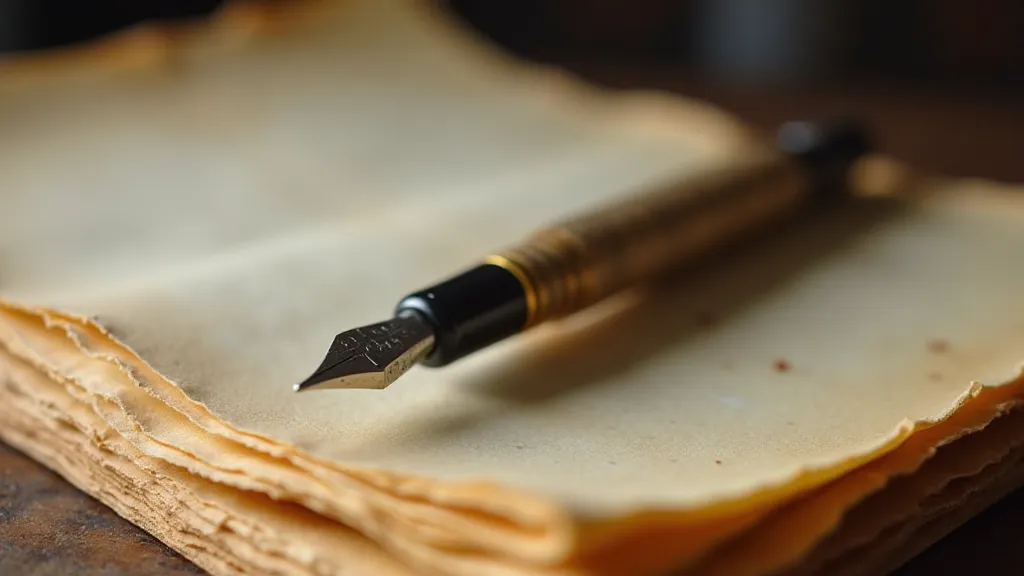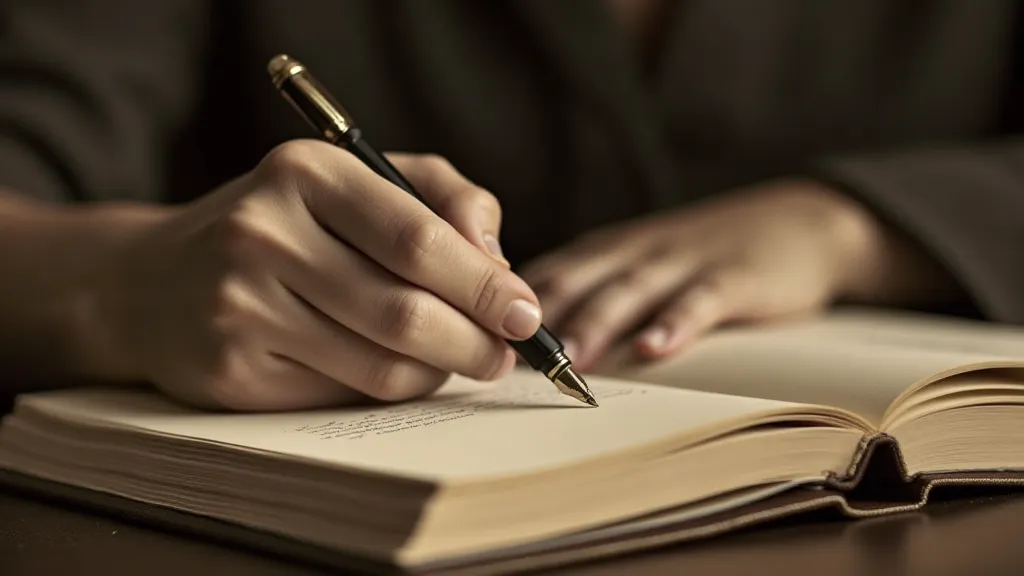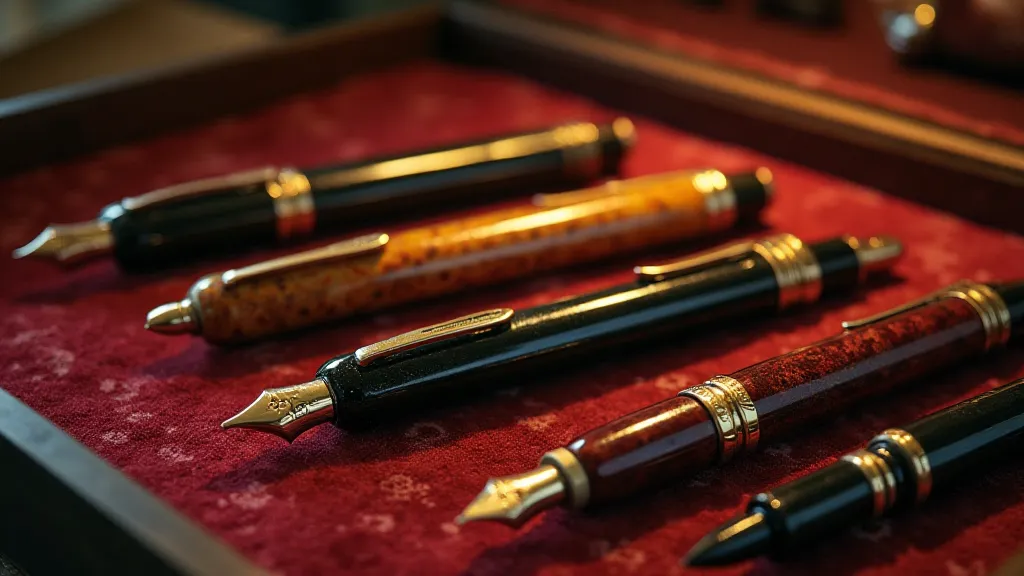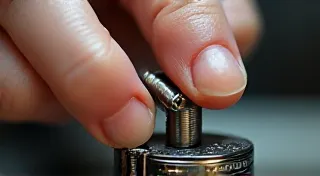The Silent Witness: Antique Pens as Relics of Untold Stories
There’s a particular weight to holding an antique pen. It isn’t just the physical heft of gold and celluloid, or the satisfying click of a lever opening to reveal a nib poised for action. It’s the weight of history, of countless words penned, thoughts captured, and emotions poured onto paper. Each scratch, each slight discoloration, is a testament to a life lived, a story partially told, and a connection to a past that feels both distant and intimately close.
We often think of historical documents as parchment scrolls and grand pronouncements. But consider the quiet power of a single letter, meticulously drafted and sent across continents. Or a journal entry, chronicling a moment of profound joy or heartbreaking sorrow. These were often written with pens just like the ones we can hold in our hands today – antique pens, silent witnesses to the passage of time and the unfolding of human experience.

A Legacy in Metal and Resin
The world of antique pens is vast and wonderfully diverse. Names like Waterman, Parker, Sheaffer, Montblanc, and Wahl-Evans evoke a certain romanticism, representing eras of innovation and craftsmanship. Waterman, founded in 1884, quickly established itself with a revolutionary self-filling mechanism, a departure from the then-dominant dip pens. Parker’s early “Lucky Curve” pens, known for their distinctive shape and affordability, brought writing instruments to a wider audience. Sheaffer championed button fillers and lever fillers, while Montblanc, with its iconic star emblem, rose to symbolize luxury and prestige. Wahl-Evans, a smaller but highly regarded brand, is celebrated for its exquisite craftsmanship and beautifully mottled celluloid barrels.
These weren't merely objects; they were statements. They represented success, education, and an appreciation for the finer things in life. Imagine a young lawyer meticulously drafting legal documents with a Wahl-Evans, a budding poet composing verses with a Waterman, or a loving father penning letters to his children with a Parker. Each act of writing imbued the pen with a significance far beyond its material value.
The Stories They Hold
I recently acquired a Sheaffer Lifetime balance-filling pen from an antique dealer. It belonged to a woman named Eleanor, who, according to the dealer, was a schoolteacher in rural Ohio during the 1930s. I haven’t been able to confirm this definitively, but I can’s help but imagine her using that very pen to grade papers, write report cards, and perhaps even correspond with her family.
Holding it, I feel a strange connection to her. I wonder about her hopes and dreams, her struggles and triumphs. Did she find joy in her work? What did she think of the world around her? The pen itself offers no answers, but it sparks the imagination, conjuring images of a life lived with purpose and dedication. Even without direct lineage, there is a powerful feeling that echoes the lives of those who used these tools.

Craftsmanship and Restoration – A Glimpse into the Past
The craftsmanship of antique pens is truly remarkable. Early pens were often hand-turned from ebonite or hard rubber, materials that have aged gracefully over time. The nibs, typically crafted from gold or steel, were meticulously ground and shaped to produce a smooth and responsive writing experience. Even the filling mechanisms, whether lever fillers, piston fillers, or button fillers, were marvels of engineering, demonstrating an ingenuity that is often lacking in modern manufacturing.
Restoring an antique pen can be a rewarding experience, allowing you to not only revive a piece of history but also to gain a deeper appreciation for the skill and artistry that went into its creation. It’s a delicate process, requiring patience and a gentle hand. Cleaning a pen often involves soaking it in warm water and carefully removing any accumulated ink residue. Replacing a damaged sac, the rubber component that holds the ink, is a common repair. And occasionally, a nib needs to be realigned or even re-ground to restore its writing performance. However, any restoration should be approached with respect for the pen's original character; the goal is to preserve its authenticity, not to create a completely new object.
More Than Just a Tool – A Tangible Memory
The value of an antique pen isn't solely determined by its monetary worth. While some rare and highly sought-after models can command significant prices, the true value lies in the stories they hold, the history they represent, and the connection they provide to the past. They serve as tangible reminders of lives lived, ideas expressed, and connections forged.
Consider the possibility that the pen you hold was once used by a soldier writing home from the front lines, a suffragette advocating for women's rights, or an immigrant sharing their hopes for a new life. Each stroke of the nib carries the weight of their experiences, the echoes of their voices.

Preserving the Legacy
As collectors and enthusiasts, we have a responsibility to preserve the legacy of these remarkable writing instruments. Sharing our knowledge and passion with others helps to ensure that these pieces of history continue to inspire and connect us to the past. The simple act of holding an antique pen, of feeling its weight in your hand, can transport you to another time, allowing you to experience a moment of connection with those who came before us. They are, truly, silent witnesses to the unfolding story of humanity.





